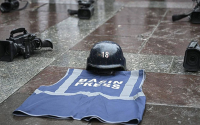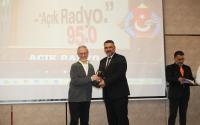8 September 2004The Independent
The American death toll in Iraq reached 1,000 last night, the White House announced after yet another day of heavy fighting in Baghdad.
The symbolic figure was reached 18 months after President Bush started the war that has become the defining issue of the US presidential campaign. His rival in the elections, the Democrat candidate John Kerry, called it a "tragic milestone".
The Pentagon said that 998 troops and three civilian defence employees had been killed in Iraq, and 6,916 soldiers wounded. Yesterday, fierce battles between US forces and Shia militiamen of the Mehdi Army in the sprawling slum of Sadr City left 34 people dead, including one US soldier, and 193 wounded. Shia fighters used hammers to dig up asphalt from the roads, and then planted explosives. Shops shut as roads were blocked with stones and tyres.
Militiamen carrying machineguns and rocket-propelled grenade launchers moved hurriedly towards the fighting. Sheikh Raed al-Khadimi, the spokesman for Muqtada Sadr, the radical Shia cleric, said: "Our fighters had no choice but to return fire and to face the US forces and helicopters pounding our houses."
US commanders have said they want to clear the Mehdi Army from its stronghold in Sadr City. Talks between representatives of Mr Sadr and the interim government of Iyad Allawi, the Prime Minister, broke down when the government rejected the demand that American troops keep out of Sadr City.
If Mr Allawi and the US want to eliminate the Mehdi Army entirely there could be fighting in Sadr City as bloody as anything seen during the three-week battle for Najaf that took place last month and devastated the holy city.
The US is now fighting two different wars in Iraq: one is against the large but ill-trained Mehdi Army; the other is against the highly effective Sunni Muslim guerrillas who have killed 12 US soldiers in the past two days.
Many of the US soldiers have died when their vehicles were caught by the blast from roadside bombs, usually several heavy artillery shells detonated by a command wire. The US army has not found the answer to this type of attack.
A typical but devastating ambush using a buried mine took place at 11.45pm on Monday in the Khadra district of Baghdad beside an expressway close to an intersection much used by American military traffic.
As a convoy of Humvees the enlarged jeeps preferred by the US Army passed along the road a bomb exploded, squarely hitting one vehicle. Rocket-propelled grenades were fired from the other side of the road.
The blast destroyed one Humvee, killing a soldier and wounding another. The explosion was powerful enough to hurl shattered fragments of the weapon on to the roof of a house. A metal door from the vehicle had been flung 40 yards and was lying on top of another roof where it had cut through an electricity cable in its fall. Beside it were torn pieces of American uniform and the broken lid of a first-aid kit.
Ten minutes away from where the Humvee had been destroyed, guerrillas launched another professional ambush yesterday morning. Their target was Ali al-Haidri, the governor of Baghdad, as he sped down the road in a heavily armed convoy on his way to work.
A witness, Ali Faruq, said that as the governor's convoy drove by two men who were standing by the boot of their car quickly opened it. Inside was a gunman who opened fire. At the same moment,two other gunmen on foot, their faces concealed by kafiyahs, appeared ahead of the convoy.
To get off the main road, Mr Haidri's convoy turned right into a side street. The ambush party must have been expecting this. Mr Faruq said: "Three minutes earlier a man had put down a box in this street. It turned out to be a bomb."
It exploded, making a black crater in the tarmac and smashing down the wall of the nearby Ala Allah mosque.
But whoever detonated the bomb did so seconds too early because the governor's car was still approaching.






